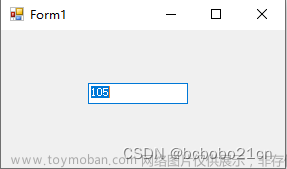背景
最近QA测试一个我开发的一个Web API时,我意识到之前对C#的default的理解一直是想当然的。具体情况是这样,这个API在某些条件下要返回模型的默认值,写法类似于下面这样
[HttpGet(Name = "GetWeatherForecast")]
public WeatherForecast Get()
{
return default;
}
实际上,这个API会返回204 No Content,而不是想象中的一个空的WeatherForecast。API返回204,说明default得到值是null,为什么会这样?
正确理解default
查看C#语言规范里的说明,default表达式是产生一个类型的默认值(A default value expression produces the default value of a type),而不是类的默认值(Type和Class都被翻译成类真是不太友好)。 我们知道,C#里引用类型的默认值就是null,对此通过查看IL,可以发现给一个引用类型赋默认值,就是通过ldnull指令将一个空引用推送到计算堆栈上。
IL_0001: ldnull
IL_0002: stloc.0 // V_0
对于值类型,比如decimal,则是通过initobj指令将位于指定地址的基元类型字段初始化0。
IL_0001: ldloca.s 'value'
IL_0003: initobj [System.Runtime]System.Decimal
与newobj不同, initobj不调用构造函数,只用于初始化值类型。引用类型和值类型的默认值都可以认为是常量。
真相大白,现在我们知道为什么上面那种情况API会返回204,还是要多看文档,不能想当然。
应用
我们常用的linq里的FirstOrDefault方法,如果没有找到符合条件的值就会返回默认值,查看源码实现,其实它就是返回的default,这个方法命名还是很合理的。文章来源:https://www.toymoban.com/news/detail-794457.html
private static TSource? TryGetFirst<TSource>(this IEnumerable<TSource> source, out bool found)
{
if (source == null)
{
ThrowHelper.ThrowArgumentNullException(ExceptionArgument.source);
}
if (source is IPartition<TSource> partition)
{
return partition.TryGetFirst(out found);
}
if (source is IList<TSource> list)
{
if (list.Count > 0)
{
found = true;
return list[0];
}
}
else
{
using (IEnumerator<TSource> e = source.GetEnumerator())
{
if (e.MoveNext())
{
found = true;
return e.Current;
}
}
}
found = false;
return default;
}
另外,如果你已经厌倦使用null来判断是否为空,现在多了一个default选项。文章来源地址https://www.toymoban.com/news/detail-794457.html
if (_settings == default){
}
参考
- https://learn.microsoft.com/en-us/dotnet/csharp/language-reference/language-specification/expressions#12820-default-value-expressions
- https://learn.microsoft.com/en-us/dotnet/csharp/language-reference/operators/default#default-literal
- https://learn.microsoft.com/en-us/dotnet/csharp/language-reference/builtin-types/default-values
到了这里,关于正确理解c# default关键字的文章就介绍完了。如果您还想了解更多内容,请在右上角搜索TOY模板网以前的文章或继续浏览下面的相关文章,希望大家以后多多支持TOY模板网!







